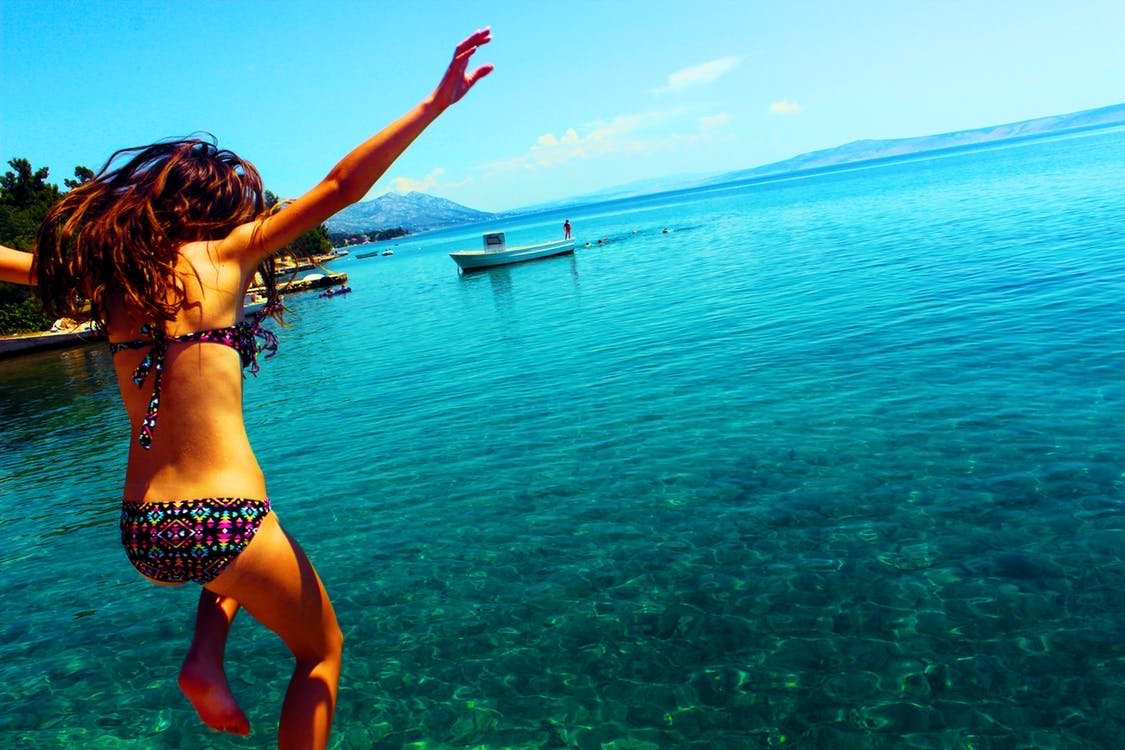Most people don’t get sea sick at all on cruise ships: big vessels don’t move around nearly as much as small boats. But it is smart to be prepared.
Especially if you are sensitive to motion sickness on land, consider the following steps to minimize problems on your cruise….
1. Get a preventative. Before your cruise, pick up one or more of the following:
- Acupressure wrist-band. Many sailors and cruisers swear by a drug-free option. It works for most (but not all) people and is a good option if you are already taking medication for another condition.
- Scopolamine patch. This is the most popular prescription medicine for preventing seasickness. You must get a prescription from your doctor, and it should only be worn for three days at a time. The patch is worn behind the ear and provides a small, continuous dosage of the anti-nausea drug scopolamine.
- Over-the-counter pills. Dramamine-type anti-nausea pills are available under a range of names: Marezine, Bonine, Phenergan, Sea-Calm. They make some people feel sleepy, but don’t have the more serious potential side effects that Scopolamine does, so they are generally available without a doctor’s prescription. These are usually available at the front desk. Take them before you feel sick. (Usually, the ship will tell you if the weather will be rocky on any particular day.)
- Ginger. Pregnant women and sailors have been using ginger for years to ward off nausea. Ginger comes in many different forms. One good option is anti-nausea ginger gum.Sadly, ginger ale soda doesn’t have any actual ginger, so if you are already aboard your best option for getting ginger is to go to the sushi bar and eat some pickled ginger.
2. Avoid open seas. Crossing the Atlantic or Pacific (e.g., on the way to Hawaii) is frequently choppy. Spring and autumn sailings on the West Coast are also often rough. The Caribbean and other areas occasionally get high waves, but in general, they are much better than cruises in the open ocean.
3. Avoid end-of-season sailings. This does not apply to the Caribbean or Mexico, which are warm year-round. However, some places stop in the early autumn, because the weather is too cold in the winter: Alaska, the Pacific Northwest, the Mediterranean, Northern Europe, and South America. Avoid autumn sailings for these destinations because the incoming cold weather makes for choppy seas.
4. Look for extra-large ships. The larger the ship, the less it will get tossed around. Waves that would make a 50-person sight-seeing boat bob like an apple will barely affect a 3000-person ship. On mammoth ships like Royal Caribbean’s Freedom-class vessels (i.e, Freedom of the Seas, Independence of the Seas, and Liberty of the Seas), you may feel like you’re on bedrock rather than afloat.
5. Choose a low and central cabin, with a window or balcony. The closer you are to the ship’s center of gravity, the less you will move around. A window or balcony helps because if you start to feel sick, looking out at the horizon helps reorient your sense of balance (and your stomach).
6. Be nice to your stomach. Don’t stuff yourself, and be moderate in your consumption of rich foods and alcohol. Nothing encourages sea-sickness more than a night of heavy drinking followed by a greasy breakfast.
If you do get seasick…
If you are on a ship and start to feel sick, we recommend the following…
- Go outside and look at the horizon. This will immediately help reorient your sense of balance (and your stomach). Nausea is a result of your body becoming confused about the difference between the motion it feels (the ocean is moving you around) and motion it sees (the inside of the ship appears stationary, relative to you). Looking at the horizon gives your body a reference point it understands, and cool, fresh air also helps.
- Ginger. If you don’t have any ginger candy with you, go to the sushi bar and ask for some pickled ginger. The taste may take some getting used to, but just a few pieces can be very effective in stopping and preventing nausea.
- Dry crackers and green apples can help settle an empty stomach and are a smart alternative to heavier foods until you feel well again.
- (Re)consider the pills. If you haven’t already, talk to the ship’s nurse or the front desk about the over-the-counter medications (Sea-Calm, Bonine, etc.) available. Remember that those are most effective when taken before you feel sick, so you’ll also need to spend some time outside with ginger and green apples. In an extreme situation, the ship’s doctor can also prescribe an anti-nausea injection.
Now that you know how to handle sea-sickness, you should be fine. Take sensible precautions, know what to do if you do start to feel sick, and you will have nothing to worry about.
